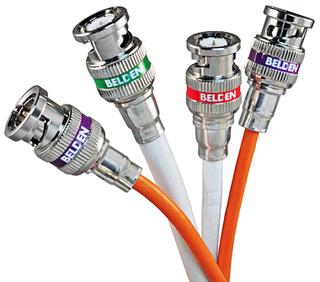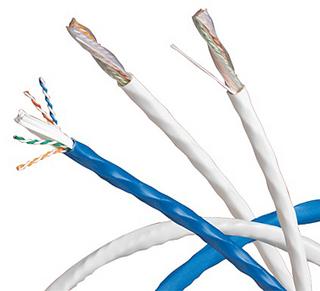Making the Connection: A Conversation with Steve Lampen

Steve Lampen
SPRINGFIELD, VA— Expensive new equipment with the latest bells and whistles gets all the publicity, but the best gear can perform below expectations without the proper cabling. With rapid changes in standards and the increasing importance of high-bandwidth digital devices and IP networks in television, the role of cable has never been more important.
Belden has been at the center of the broadcast cable business for decades and now has well-regarded divisions that manufacture some of the world’s most desirable production equipment. Broadcast Engineering Extra decided to ask Steve Lampen, multimedia technology and product line manager for entertainment products at Belden, about what the company sees is the future of cabling in an increasingly faster digital world.
BE Extra: What are one or two of the worst practices of cable installers? Are there a couple of simple tips to getting a better-functioning cable plant?
Lampen: Your readers might be interested to know that I am preparing a paper for the next NAB (April) on just this subject; when applied to the IP network world, where we all seem to be heading. Here are a couple of quick tips for now:
A. If you’ve never played with this kind of cable before, take a class (or at least buy a book). Or hire someone who knows how.
B. Things that worked fine with audio cables may not be so great for video or data or fiber. Using tight cable ties the same distance apart sets up a specific wavelength (frequency) and harmonics. You can kill a digital video or high-speed data cable very easily. You can cause micro-fracturing in fiber-optic cables.
C. The connectors are now as critical as the cable itself. Put a Cat-5e plug on a Cat-6a data cable and you get Cat-5e performance. Match everything!
BE Extra: Belden doesn’t make connectors for the video/audio industry, yet cable and connectors are the two components in a connectivity system. What do installers need to do to ensure they get the right connectors for their cable and their system?

Belden Brilliance BNC connectorsLampen: We bought four connector companies and now make all the commercial connectors (RCA, F, BNC). We also make some of the best professional BNCs (out to 4.5 GHz). These connectors outperform our cable, which is the best in the world. So that your readers know, we host a cable-to-connector cross-reference on belden.com in the “Resource Center.”
BE Extra: 4K/UHD seems to be on the horizon, and there is increasing demand to move, network and distribute 4K signals. What is the latest on 4K distribution over cable? Coax? Twisted pair? Fiber? Something else?
Lampen: We already make dual cables and quad cables for 4K and beyond, but the goal is “single-link” 4K. I asked a crowd of 500 at the SMPTE show if they would buy any. Not a single hand went up, which simply tells me that everyone (including all those gurus out there) is confused. Until there is a 4K standard (probably by the end of the year), nobody is willing to commit. We’re still moving ahead with our plans for “single-link” cable but, believe me, the conference calls are getting interesting inside Belden.
BE Extra: Has the fluctuating (generally rising) cost of copper been an issue for Belden? Or do people need cable and will pay whatever it takes?
Lampen: Actually, the price of copper has remained consistent for some time now. If our single-link cable requires new machinery or new technology, there will be a moderate price increase, but too soon to give you a number.
BE Extra: What are one or two of the future technologies in the works at Belden? Different cable configurations? Different insulation and dielectric materials? Different shielding techniques? Fiber made simple?

Belden 10GX UTP cablesLampen: The last new plastic was Teflon, invented in 1937. Now if someone figures out carbon nanotubes or room-temperature superconductors (Google them if you want more details), would you please call me? Would love to go there.
BE Extra: Is there anything else BE Extra’s readers should know about cable and how to get the most out of their cable budget and effort?
Lampen: There are three directions the industry is heading: Coax for 4K (and possibly beyond), data networking (40 Gbps and 100 Gbps are on the way) or fiber optics. If one of these looks like the way to go, that’s because you’ve never played there and don’t realize the financial, logistical and technical hurdles that all these have (and all different, of course). Figure it out and go collect your Emmy Award. If you figure out room-temperature super conductors, we’ll throw in a Nobel Prize.
Get the TV Tech Newsletter
The professional video industry's #1 source for news, trends and product and tech information. Sign up below.
Bob Kovacs is the former Technology Editor for TV Tech and editor of Government Video. He is a long-time video engineer and writer, who now works as a video producer for a government agency. In 2020, Kovacs won several awards as the editor and co-producer of the short film "Rendezvous."

